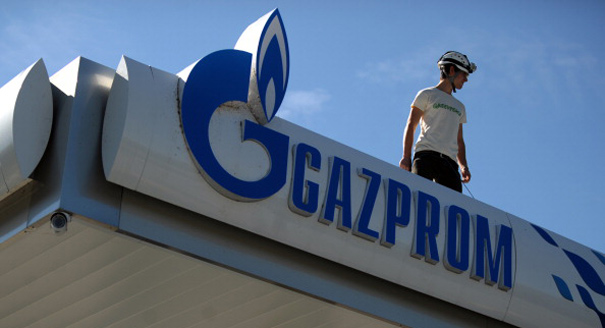A selection of experts answer a new question from Judy Dempsey on the foreign and security policy challenges shaping Europe’s role in the world.
Jack FarchyMoscow and Central Asia correspondent for the Financial Times
Yes, Gazprom’s halcyon days are over. In dollar terms, the company’s earnings before interest and taxes are set to fall almost fourfold, from $63 billion in 2013 to about $17 billion in 2016, according to forecasts from analysts at Sberbank CIB. That is having a significant effect on Gazprom’s most important means of asserting its place in the Russian economy: its capital expenditures. From an average of $44 billion between 2010 and 2013, Gazprom’s capital expenditure is set to fall to $21 billion in 2016—and this year, for the first time in at least a decade, the company’s cash flows won’t be enough to cover its planned spending.
With a glut in global liquefied natural gas (LNG) supplies widely anticipated over the next few years, there seems to be scant hope that gas prices will recover significantly in the short to medium term. Gazprom, which has increasingly moved its contracts to reflect spot gas prices rather than oil prices in recent years, will not be able to avoid this pricing reality and will be forced to rein in its expansive spending plans or increase leverage—or, most probably, a mixture of the two.
For all that, Gazprom is likely to continue to be a force in the Russian economy and the European gas market. The halcyon days may be over for Gazprom, but they are also over for the entire global energy industry—with bankruptcies across the U.S. shale industry and cancellations of major projects. Despite increased competition in Europe, Gazprom is likely to maintain its market share as it has among the lowest costs in the industry.
David LivingstonAssociate in Carnegie’s Energy and Climate Program
Gazprom finds itself between a rock and a hard place. Europe’s gas demand is flat, and Gazprom’s pivot to Asia through pipeline deals with China is still fraught with uncertainty. North American shale gas in the form of liquefied natural gas (LNG) is poised to reshape the global market, joining a similar onslaught of Australian LNG supplies.
Back home, Rosneft, Russia’s largest oil exporter, has turned toward natural gas production amid sanctions and low oil prices and is pressuring the Russian government to end Gazprom’s gas monopoly. If granted, this would accelerate a skirmish for gas market share, similar to what has been seen recently in the global oil market. Prices in Europe would fall further, moving closer to Russia’s cost of production.
Gazprom has little to gain from this. The company will likely report negative free cash flow in 2016 for the first time in a decade. Gazprom’s bold 2007 ambition to become a trillion-dollar company was clearly a pipe dream: the energy giant is ill-equipped to finance new projects such as the planned Russian-German pipeline Nord Stream 2 and is under increasing tax and restructuring pressure from a starving government. Russian gas will not disappear from European and Asian markets, but the highly politicized corporate body will likely never be the same.
Alan RileyNonresident senior fellow at the Atlantic Council’s Global Energy Center
Clearly, Gazprom is in some trouble. The Russian energy giant had a market value of above $300 billion in 2008, down to less than $50 billion today; natural gas prices are falling in Europe; demand for natural gas in Europe, where 60 percent of revenues come from, is sinking; and the Chinese option is disappearing in the face of a slowing Chinese economy.
The real hope for Gazprom, however, is the European single market in gas. As that market is finally connected and legal barriers are removed, Gazprom is the nearest large-scale supplier of natural gas. In addition, current-generation renewables cannot provide sustainable base load supply at scale. As the fossil fuel that emits the least carbon dioxide, natural gas has a thirty- to forty-year role to play.
Gazprom could help fill that role. However, the company would have to embrace the single market, adopt a competitive high-volume, low-price business model, do a deal on the EU’s antitrust case against it, and drop the proposed German-Russian pipeline Nord Stream 2. The question is: Does Gazprom want to decline while locked into the arguments and strategies of the past or embrace a positive successful pro-market future?
Jacek Saryusz-WolskiVice chair of the Group of the European People’s Party in the European Parliament
With the growing extraction of unconventional hydrocarbons and slowing global demand, Gazprom is facing increasingly tough external competition. With the Russian economy sinking, the energy giant cannot count on internal demand. In normal circumstances, this situation would spell doom for a company that focuses exclusively on resources. Yet Gazprom is no normal company, but rather an economic and energy arm of the Kremlin. If need be, Gazprom will be propped up by the Russian government, which is not bound by EU rules on competition. Russian taxpayers and private companies will bear the burden of ensuring politically influenced hostile takeovers in the Central and Eastern European energy market.
Gazprom’s leadership knows this, so it doesn’t back down. In fact, after withdrawing from projects like the proposed South Stream pipeline, it is doubling down on the German market, preparing for the EUGAL pipeline, which will run through eastern Germany. If it succeeds, Russia will have all the tools to prevent any genuine diversification of energy sources like liquefied natural gas (LNG) terminals or Baltic Pipe, a proposed Danish-Polish pipeline, from succeeding. Once Gazprom manages to isolate the Central and Eastern European market—with the tacit agreement of some Western states—it will reap profits, both economic and political.








